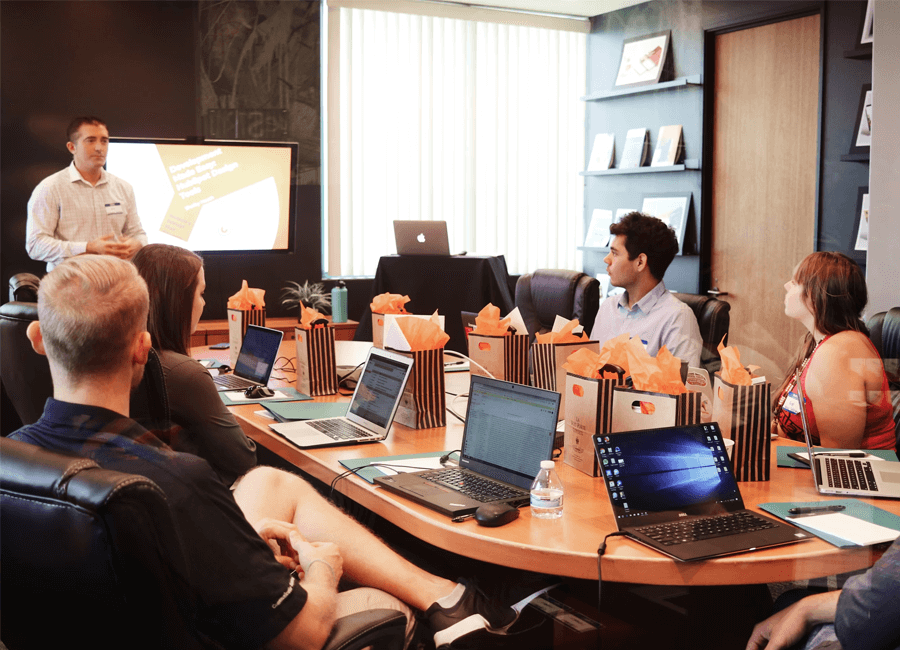Insight experts today have a multitude of qualitative research methods to choose from at any one time. Each method has it’s strengths and purpose, with many able to combine in order to provide a well-rounded qualitative experience and actionable insights for stakeholders.
But equally, there are areas where some qualitative methods don’t stand as the best option, and it’s up to the insight experts running the research project to understand which methods will serve the project well, and which will ultimately fail. Here we are going to go through three of the most popular qualitative research methods and evaluate their usefulness, best use cases, and ways to mitigate their weaknesses, to make sure that any insights generated from these methods are top notch.
Focus Groups
The most popular and iconic qualitative research method, focus groups have been automatically synonymous with qualitative research for decades. As such, they’re the go-to qualitative methodology for most insight experts, sometimes to their own detriment.
A great focus group can be a boon to many market research strategies, as it helps to bolster quantitative data with detailed real-world context and explore exciting opportunities with an intimate group. But this can only be done when the focus group is properly constructed, and the recruits are relevant and engaged. A great focus group is also able to alleviate any stress on the side of researchers, stakeholders, and most importantly, respondents, which helps create a safe comfortable space for respondents to express themselves, and share sensitive data to create actionable insights.
Focus groups have been the focus of most qualitative innovation, and as such have evolved over the years with a few versions of the focus group appearing across mediums, primarily:
- The traditional in-person focus group
- The text-based online live chat focus group
- The video-based online focus group
Group discussions as incited by focus groups have a place in market research, but it’s important to know where to use them and when to turn to other qualitative methods. In the past, focus groups have been the place for brands to connect with their customers to refine marketing campaigns and communications, develop services and policies that truly serve a purpose, and explore future opportunities and products that add value to respondents’ lives.
But there are alternatives to focus groups that could add additional value, and mitigate the drawbacks, such as any peer pressure that a group environment can conjure and a chance to lose opinions in favour of the more confident, louder voices in the group.
The best focus groups moderators create welcoming spaces in which participants feel safe expressing themselves, no matter their opinions. It's in these spaces that the most valuable feedback can be found.
There are many qualitative methods that employ group work but with minimal drawbacks include question boards, scrapbooks, and heat-mapping smartboards. These collaborative measures do miss out the face-to-face aspect of a video or in-person focus group, but leave space for everyone to voice their views on an equal platform on whatever topics possible.
Diary Studies
Diary studies are another brilliant qualitative tool for insight teams to use to gather in-depth insights from a full sample of respondents. But this method doesn’t require any collaboration on the part of respondents, leaving a lot of space for them to explore their own opinions and experiences without fear of judgement or pressure to conform to others’ opinions.
This research method is a great way of gathering important insights over time. Whether that’s over the course of a day or a month or a timeframe of your own choice, these participants can upload regular text-based or video-based entries exploring whatever topic researchers set them.
This method is a great way to explore how respondents would use a product or service, either current or prototype, or to document their experience as they interact with a brand online and in-store. These are the more typical use cases of a diary study that most insight experts will have heard about and possibly conducted themselves.
But what insight teams are not used to doing is being more creative with the standard qualitative research methods such as diary studies. Insight teams can use diary studies to document much more than just experiences, they can be used to record more contextual conversations or participant stories that don’t necessarily add much value to the research directly but helps respondents get more comfortable with filming themselves or spending time on the platform.
If research teams incentivise entries they can makes a game of the research task, which engages participants more. Create virtual scavenger hunts with brand experiences to really get participants to engage with the brand.
Online Research Communities
Whether they’re online communities, customer-dedicated communities, wider consumer communities, or a mixture of all three, there will always be a place in market research for community research.
Communities are platforms where qualitative research participants can complete research projects and mingle outside of scheduled research tasks. This hybrid structure encourages both scheduled and ad-hoc insight generation, through qualitative methods like focus groups, question boards, diary studies, and then insight teams can create forum and blog spaces for participants to communicate with each other whenever they feel like talking.
The hallmark of a successful insight community is the degree to which members are engaged. To engage members, it's important to consider both your ongoing research schedule and the desires of your members.
These communities can be fountains of valuable knowledge and insights for stakeholders to use in daily decision-making, but only when set up and continually managed correctly. Setting up an online community takes work to find the right respondents, and to populate the platform with the right tools and tasks. But the continuous management of the community after its creation is crucial to the success of an online community. This management contains tasks such as managing respondent engagement rates, managing the participant churn rate, and moderating participant behaviour to make sure it’s in line with the values and purpose of the community.
This moderation makes sure that there is no social influence going on, and that every respondent’s voice is heard equally. There are a number of factors that can help insight teams in this, from the size of the community, the moderation techniques they implement, and understanding when to talk to respondents one on one rather than in a group. If insight teams and stakeholders are willing to take on the task of an online community and dedicate the time to maintaining it, they stand to reap the rewards of continuous high-quality insight generation.


















